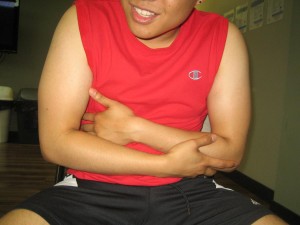Bile peritonitis is a form of inflammation in the peritoneum caused by the seepage of bile into the peritoneal cavity. Possible causes of the leakage of bile into the peritoneal cavity include gallbladder perforation, biliary trauma and perforation by peptic ulcer.
Indications of bile peritonitis
- Abdominal pain – most common symptom
- Appetite loss
- Fatigue
- Vomiting
Swollen or bloated abdomen which is larger than normal. - Weight loss
- Diarrhea
- Yellowish-tinge in the skin and eyes
- Swollen or bloated abdomen which is larger than normal
- For infectious bile peritonitis, fever is present
- Individual might collapse if the infectious type is present
What are the possible causes?
Bile peritonitis is typically brought about by inflammation of the gallbladder or the common bile duct due to perforations or rupture from percutaneous needle biopsy.
In addition, the inflammation of the gallbladder that leads to the development of bile peritonitis might also be triggered by infection or blockage of the gallbladder ducts due to the certain conditions such as stenosis, presence of gallstones, cancer and pancreatitis.
Management of bile peritonitis
The treatment for bile peritonitis is usually based on the source or underlying cause. Nevertheless, serious cases might necessitate emergency laparoscopy in which any damaged, perforated or ruptured organ is repaired.
Aside from this, the condition is also managed using antibiotics that is administered along with essential fluids to prevent dehydration. In some cases, antibiotics are also directly infused into the peritoneum.
If the condition is left untreated, the prognosis is poor and can be fatal. Nevertheless, with proper treatment, the prognosis might vary based on the symptoms and other current conditions of the individual.

